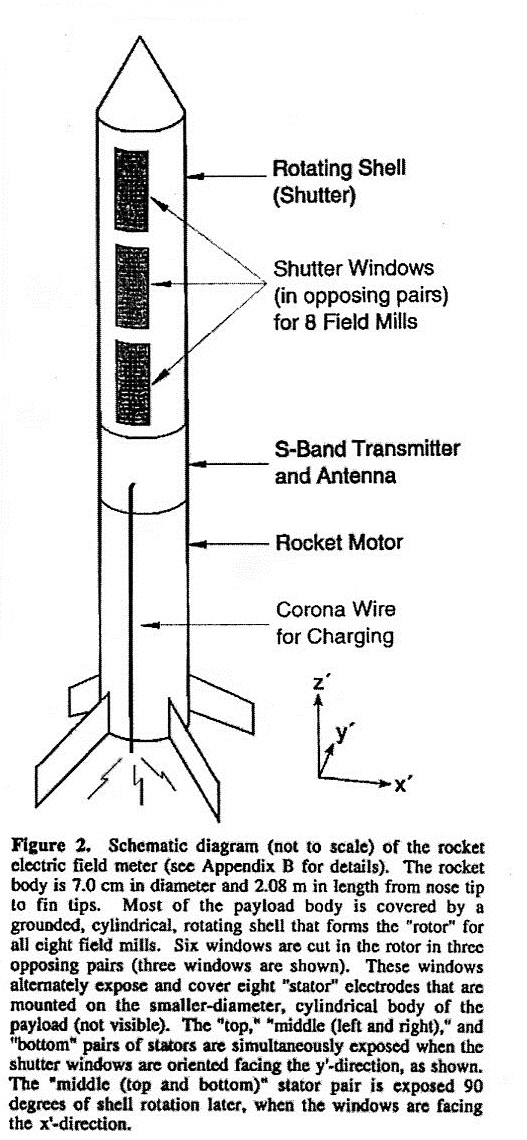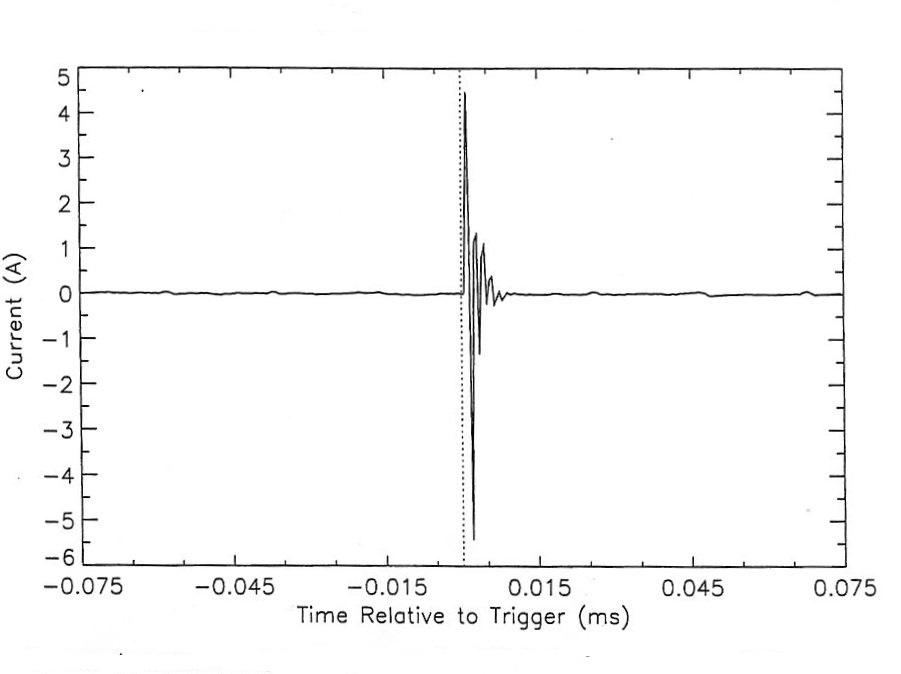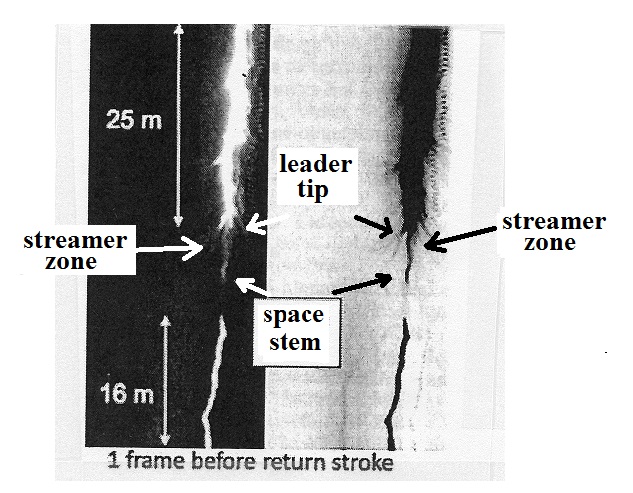


 |
 |
| Photograph of a triggered lightning discharge taken from a few 100 meters away. The straight part of the channel is where the discharge followed the wire. The lightning channel becomes much more jagged when traveling through air above the wire. (source of this photo) | A closeup of triggered lightning striking the launch tower. The green portion of the image at left is produced by heating and vaporization of the copper wire used to trigger the discharge. The brighter whiter strokes of lightning are seen at right. They have been spread across the picture by wind. Photo credit: Doug Jordan and Martin Uman International Center for Lightning Research and Testing |
| Time segment |
comments |
| 0 - 1:25 min |
natural lightning in the Tucson area |
| 1:25 - 2:00 min |
natural lightning recorded during experiments at the Grand Canyon |
| 2:00 - 2:38 2:15 2:24 2:27 |
lightning recorded during a study of
lightning strikes to wind turbines probably a + CG discharge another + CG discharge upward lightning discharge initiated by a wind turbine |
| 2:38 - 3:47 |
rocket triggered lightning in Florida |








| Launch |
height (m) of the triggering rocket |
electric field (kV/m) |
Potential (MV) |
| 2 |
447 |
12.4 |
-5.0 |
| 6 |
307 |
14.5 |
-4.7 |
| 7 |
295 |
19.4 |
-4.1 |
| 8 |
279 |
15.0 |
-3.6 |
| 9 |
312 |
13.4 |
-3.7 |
| 12 |
336 |
15.9 |
-4.6 |
| 13 |
230 |
18.5 |
-3.6 |
| 14 |
324 |
17.3 |
-4.2 |
| 15 |
299 |
16.4 |
-4.1 |

